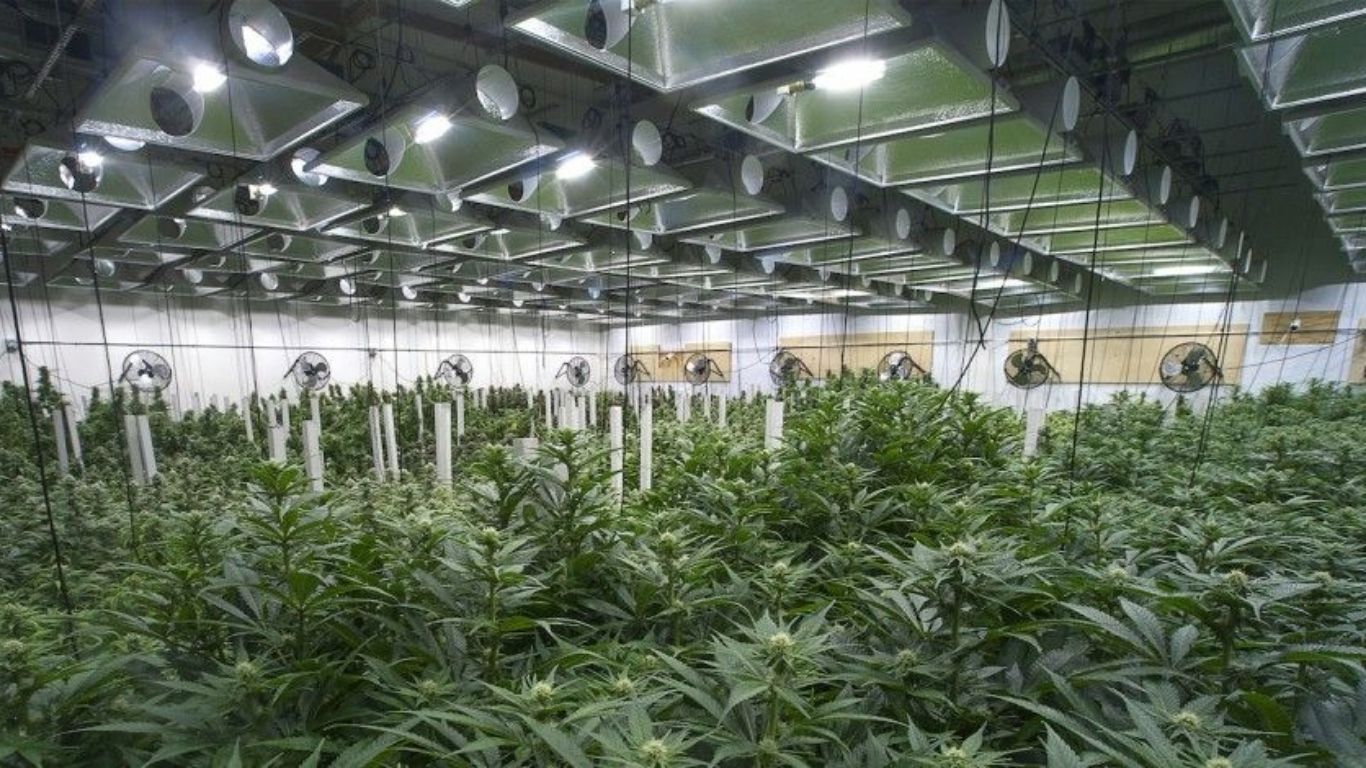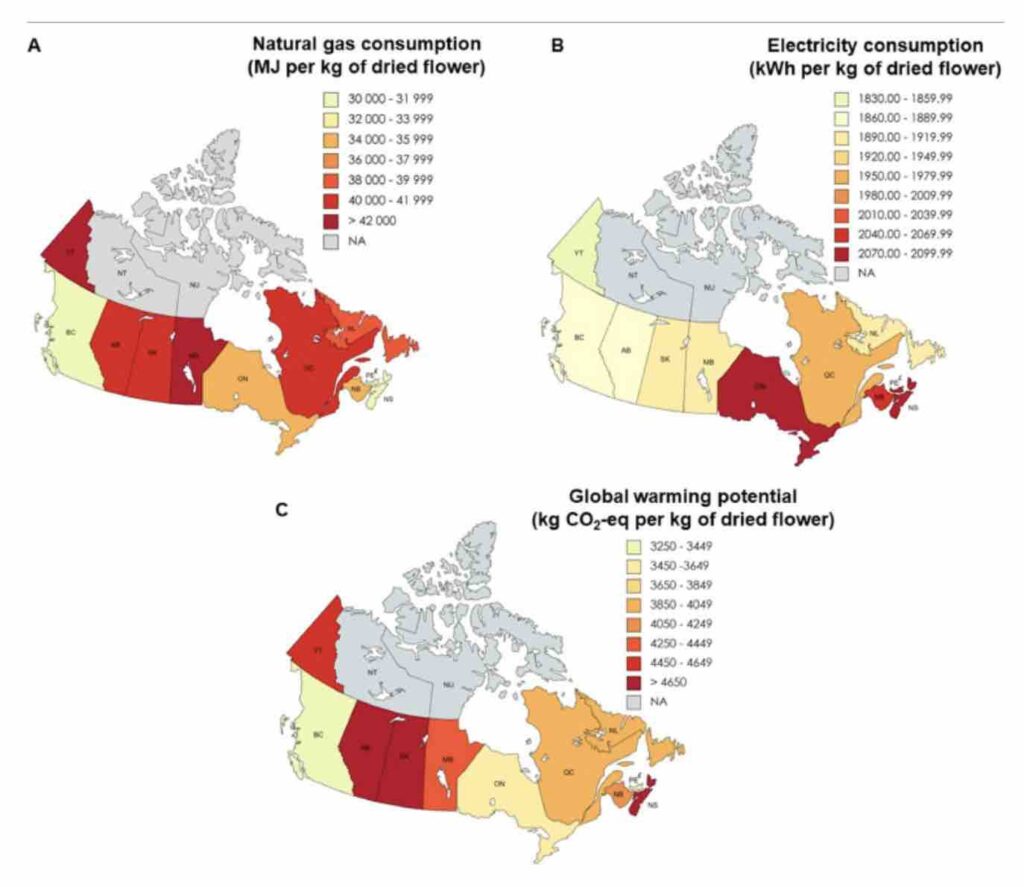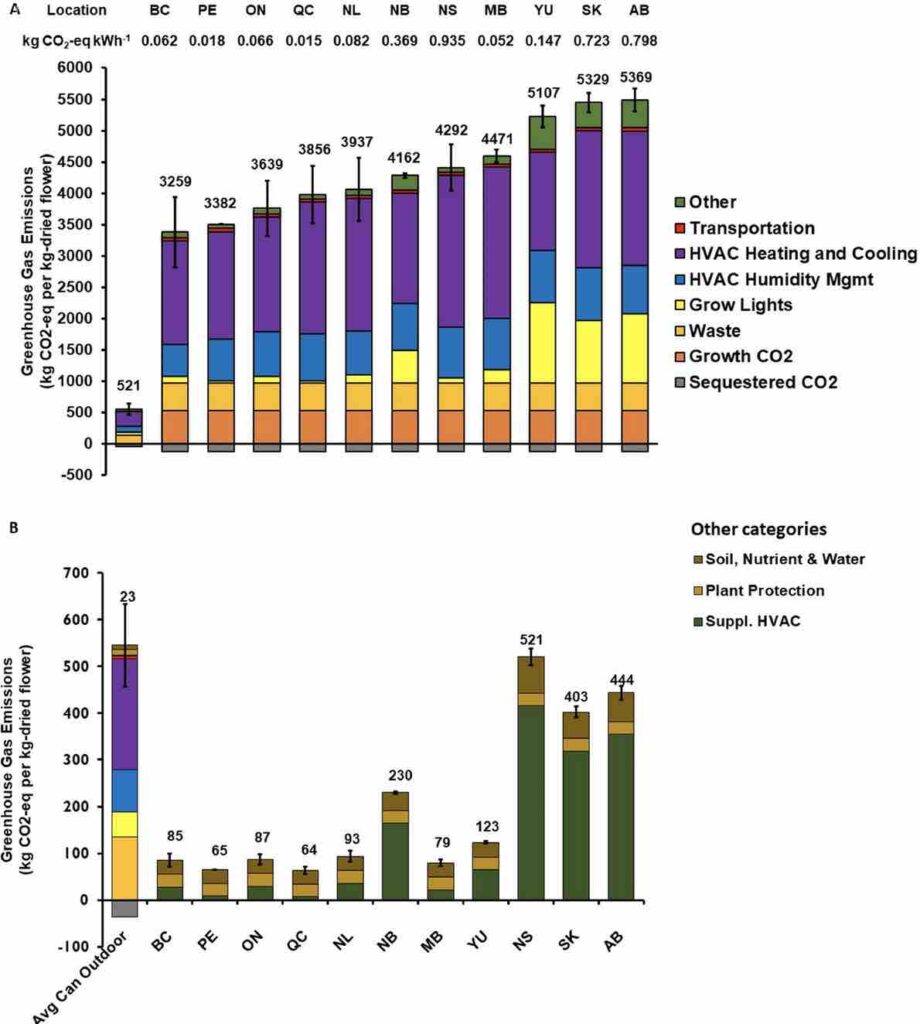
The Canadian cannabis industry has a higher rate of emissions than its US counterpart, although that rate varies significantly depending on which province.
This higher emissions rate is mainly due to colder climates, requiring more heating of indoor facilities, combined with the efficiency of each province’s electrical grid.
The investigation, led by a researcher at McGill University in Ontario, looks at the “global warming potential” (GWP) of indoor cannabis operations in Canada, calculated on a kg CO2 per kg of dried cannabis flower basis. Although this has been studied in the US, this study is the first to compare American numbers with the Canadian industry.
BC was found to be the most efficient province for growing cannabis due to milder climates and a less polluting electrical grid. In comparison, Alberta was found to be the province with the highest GWP, given its colder climate and more emissions from the power grid used to keep those grow rooms temperature-controlled.
Indoor cannabis operations in colder locations have a higher GWP primarily because of the increased need for natural gas-powered heating, which can account for half of the facility’s GWP. Cannabis grown outdoors can be six to ten times less carbon intensive than indoor cannabis and can reduce those impacts by 90%.
However, the researchers’ assumptions that electrical grid efficiency would be a strong determinant of the GWP of cannabis production was incorrect, as the climate itself was a factor in how much energy was needed. In more humid climates, for example, more power is required to manage that humidity through the growing and drying/curing process, leading to higher GWP.
After BC, PEI, Ontario, and Quebec were the most efficient places to grow indoor cannabis in terms of GWP, while Manitoba, Yukon, Saskatchewan, and Alberta were the least efficient. The research paper also asks if this count is at least partly mediated through incentives for growers in those less-efficient provinces to adopt more carbon-efficient growing methods. In the case of Alberta and Quebec, switching to electrical forms of heating rather than natural gas could lower the GWP.
“Colder locations have higher GWP because of the increased need for NG-powered heating processes. Heating via NG combustion easily accounts for 50% of the GWP. It could be said that production of cannabis grown in QC and AB could be having a disproportionate effect on the carbon footprint of the industry versus cannabis grown in ON and BC. There is a need to question whether incentives for QC and AB producers to adopt carbon-reducing strategy is needed.”
One suggestion the researchers make is to better label and identify less carbon-intensive products for consumers, encouraging them to make more environmentally friendly choices.













